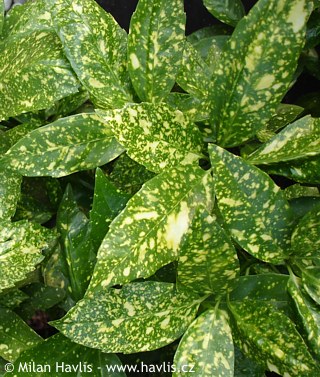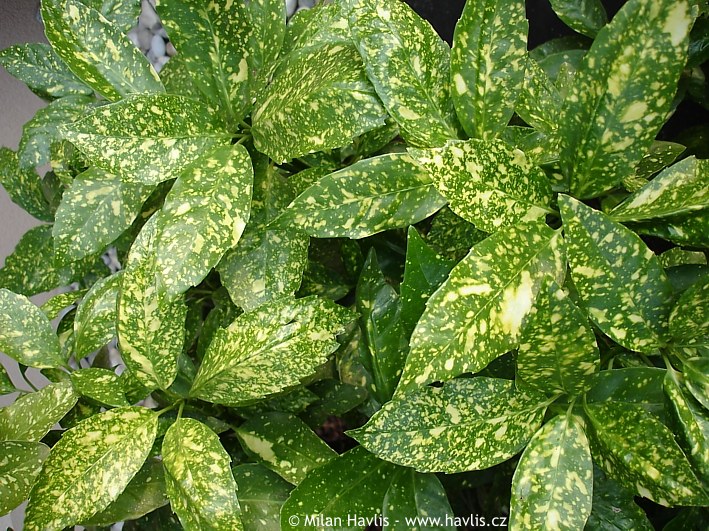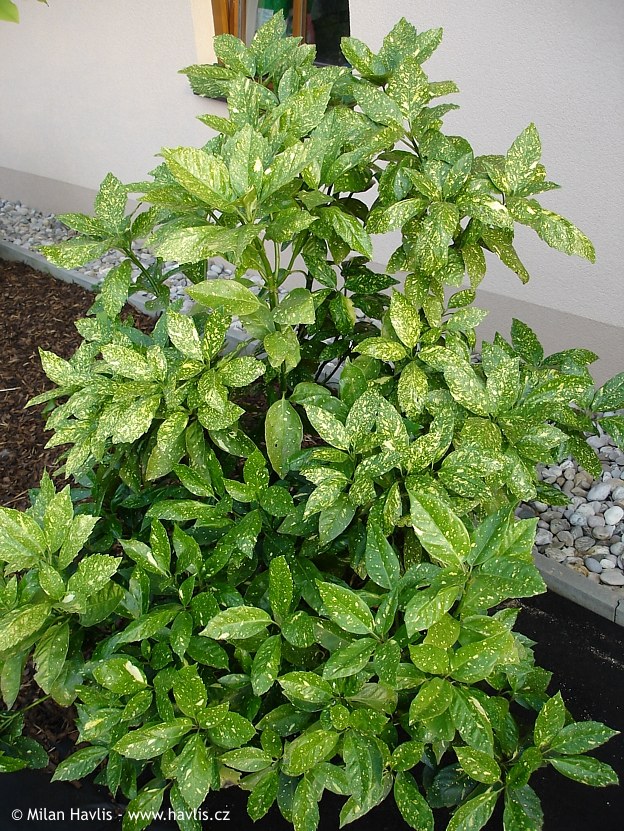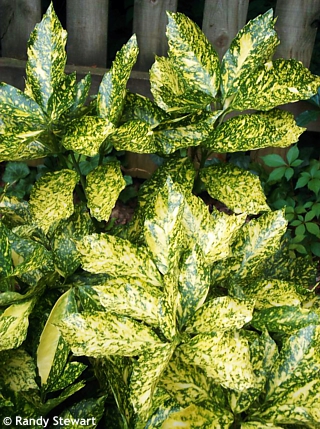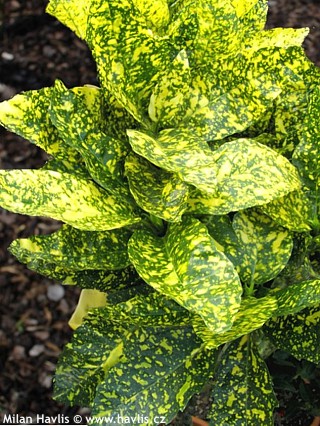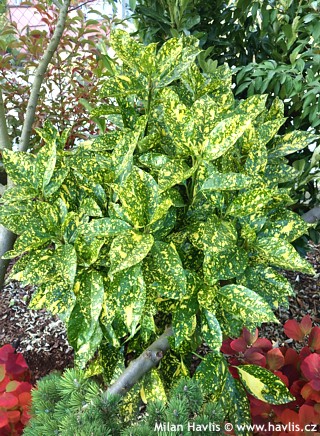Aucuba japonica 'CROTONIFOLIA' spotted laurel, Japanese aucuba


They are extremely large for a hardy evergreen plant – upto 20 cm long and 8-10 cm wide. Varigation differs from plant to plant. Crotonifolia is a female variety which can have quite attractive, large, red berries if pollinated by a male plant, e.g. aucuba japonica.
Usually considered a house plant it is suitable for outdoor growing, too, upto USDA zone 6 (-24°C). If you wish to make sure the top of the plant will not be damaged in extreme winter frosts (below -20°C) cover the plant with white woven for the few coldest days of winter. Should the top leaves be burnt after winter, just get rid of them in the spring or prune the shrub to healthy (= green) tissue. The plant will readily regenerate from lower branches and will become even denser. Trimming or pruning is best done from April until end June latest.
It does best in light to full shade, in normal to acidic soil. It needs a lot of moisture though once established it tolerates summer drought. For best results, however, we suggest planting it in fairly rich, moist but well-drained soil. Provide extra watering in frost-free winter periods. Hardy to min. -20°C, with protection to -24°C (USDA zone 6).
Last update 09-01-2009
Goods are shipped all over Europe. For Russia and U.K. and for further details please read about SHIPPING OPTIONS HERE.
Are you interested in a serious discount for orders NOV-FEB? Check your options here.
THE PRICES INCLUDE VAT of 15%. For quick conversion you can use 1 CZK = approx. 0.04 EUR
- STANDARD QUALITY - Plants of this group are 1st class quality with number of branches and overall density adequate to their size and age, considering they were container grown.
- DE LUXE QUALITY - This label guarantees a luxurious quality of manually selected plants that, compared to their height and age, are exceptionally dense and beautiful.
- EXTRA - These plants are usually mature and bigger specimens with exceptional overall appearance.
- STANDARD (as described in the plant form) means a tree with a trunk of 190-210 cm and a crown at the top, unless specified differently. The commercial size for trees is their girth measured in the height of 1m from ground.
- HOBBY - These plants are of the same quality as our standard-quality plants but younger and therefore cheaper.
- SHRUB - a woody plant with branches growing bushy from the ground level.
- HALF-STANDARD or MINI-STANDARD - a small tree with shorter trunk, its size is usually specified.
- FEATHERED - These are trees with branches growing already from the base of the trunk and up along the stem.
- GRASSES and PERENNIALS - Sizes given usually read the diameter of the pot or the clump, as specified.












